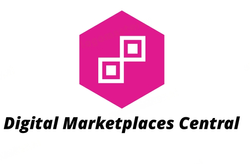Step into a world where learning and innovation collide, paving the way for an immersive educational experience like never before. Virtual Reality (VR) technology is revolutionizing how businesses approach product education in the B2B sphere, offering a dynamic and interactive platform that transcends traditional methods. Let’s delve into the realm of VR and discover how embracing this cutting-edge technology can elevate your B2B product education strategies to new heights.
The Rise of VR in B2B Industries
Virtual Reality (VR) technology has been steadily making its mark in the B2B industries, revolutionizing how companies approach product education. As businesses strive to stay ahead in a competitive landscape, VR offers a cutting-edge solution for training and demonstrating complex products or services.
The rise of VR in B2B sectors can be attributed to its immersive nature, providing users with hands-on experiences without physical limitations. This technology allows for interactive learning environments that engage employees and clients on a whole new level.
From manufacturing to healthcare and beyond, various industries are leveraging VR to enhance their product education strategies. Companies are discovering the power of virtual simulations in conveying information effectively and efficiently.
As more B2B organizations recognize the value of VR in improving training outcomes and customer understanding, we can expect this trend to continue shaping the future of business education practices.
Benefits of Using VR for Product Education
Virtual Reality (VR) technology offers numerous benefits for product education in B2B industries. One of the main advantages is the immersive experience it provides to users, allowing them to interact with products in a realistic virtual environment. This hands-on approach enhances learning retention and engagement among stakeholders.
Another benefit of using VR for product education is the ability to showcase complex features and functionalities that may be challenging to demonstrate through traditional methods. With VR, users can explore every aspect of a product, dissecting it piece by piece without any physical constraints.
VR enables companies to save costs associated with physical prototypes and training materials. By creating virtual replicas of products, businesses can conduct training sessions at scale without the need for expensive resources or logistics.
VR allows for remote collaboration among teams scattered across different locations. Through virtual meetings and training sessions, employees can come together in a shared digital space to learn about products collectively.
Leveraging VR technology for product education not only enhances understanding but also revolutionizes how B2B companies engage with their customers and internal teams alike.
Real-life Examples of Successful VR Product Education in B2B Companies
In the realm of B2B industries, VR technology is revolutionizing product education. Companies like Boeing have utilized VR to train employees on complex aircraft systems in a more immersive and interactive way. By simulating real-world scenarios, employees can learn hands-on without the need for physical prototypes.
Similarly, GE Healthcare has incorporated VR into their training programs to educate medical professionals on using new equipment effectively. Through realistic simulations, healthcare workers can practice procedures and troubleshoot issues in a safe virtual environment.
Volvo Trucks has implemented VR to showcase their latest vehicle features to potential clients. By allowing customers to experience the product virtually, sales teams can provide detailed demonstrations without the need for physical showrooms or test drives.
These examples highlight how B2B companies are leveraging VR technology to enhance product education and improve learning outcomes across various industries.
How to Incorporate VR into Your B2B Product Education Strategy
Considering incorporating Virtual Reality (VR) into your B2B product education strategy can significantly enhance the way you train and educate your clients on complex products or services. To start, identify key learning objectives and content that would benefit from immersive VR experiences. Then, collaborate with VR developers to create interactive simulations that allow users to engage with the product in a realistic virtual environment.
Provide hands-on training sessions using VR headsets to give clients a firsthand experience of how your products work. Integrate quizzes or assessments within the VR modules to reinforce learning and track progress effectively. Moreover, leverage analytics tools to gather insights on user engagement and performance metrics for continuous improvement.
By incorporating VR into your B2B product education strategy, you can offer a unique and engaging learning experience that sets your business apart from competitors.
Conclusion
In a world where digital transformation is key to staying competitive, embracing virtual reality for B2B product education can be a game-changer. The immersive nature of VR technology allows companies to create engaging and interactive experiences that enhance learning and drive deeper understanding of complex products or services.
By incorporating VR into their product education strategy, businesses can streamline training processes, reduce costs associated with physical prototypes, and provide customers with a more memorable and impactful way to experience their offerings. Not only does VR offer a novel approach to educating clients, but it also sets companies apart as innovative leaders in their industry.
As the adoption of VR continues to grow across various sectors, businesses that invest in this technology now will not only benefit from improved product education but also gain a competitive edge in the market. Embracing virtual reality is no longer just an option; it’s becoming a necessity for forward-thinking B2B companies looking to elevate their educational efforts and deliver exceptional value to their customers.



